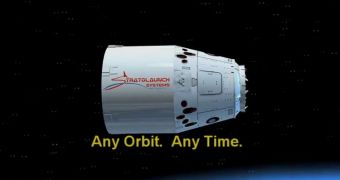Microsoft Co-Founder Paul Allen pledged some $200 million of his own wealth for founding and funding Stratolaunch Systems, a new commercial space venture that will transport cargo and tourists to low-Earth orbit.
In order to get things off the ground, he partnered with innovative aerospace engineer Burt Rutan and PayPal co-founder Elon Musk. The venture includes a number of already-established companies.
Some of these include Musk's Space Exploration Technologies Corporation (SpaceX), Rutan's former company Scaled Composites – which now belongs to Northrop Grumman – and Dynetics, Inc., a defense contractor for the United States government.
In developing the new launch system, Scaled Composite will contribute the impressive carrier aircraft, SpaceX will be providing the multi-stage booster, while Dynetics will contribute the technical integration and mating systems.
The entire platform Stratolaunch will be using resembles the WhiteKnightTwo/SpaceShipTwo combo developed by Virgin Galactic, but with a series of major exceptions. See how the launch system will look like and operate in the video below.
It's important to note here that Allen and Rutan also worked together in the past, on creating the SpaceShipOne. That concept has since evolved into the SpaceShipTwo Virgin Galactic develops for orbital tourism, but the idea belonged to the two beforehand.
The new venture plans to construct the aircraft with the largest wingspan in the world, larger than a football field (380 feet, or 115 meters). The behemoth will be powered by six Boeing 747 engines (three on each wing), and will also boost a twin-hull construction.
Between the two bodies of the airplane, engineers will install SpaceX's multi-stage rocket. The latter will be able to carry either a manned or an unmanned spacecraft, or another type of cargo, such as for example commercial satellites, according to The Verge.
The carrier aircraft is used to boost the rocket to high altitude. After a correct position is reached, the rocket separates and then fires its own booster, which allows it to achieve escape velocity. In this manner, it can put up to 13,500 pounds (6,123 kilograms) of cargo in LEO, TechCrunch reports.

 14 DAY TRIAL //
14 DAY TRIAL //